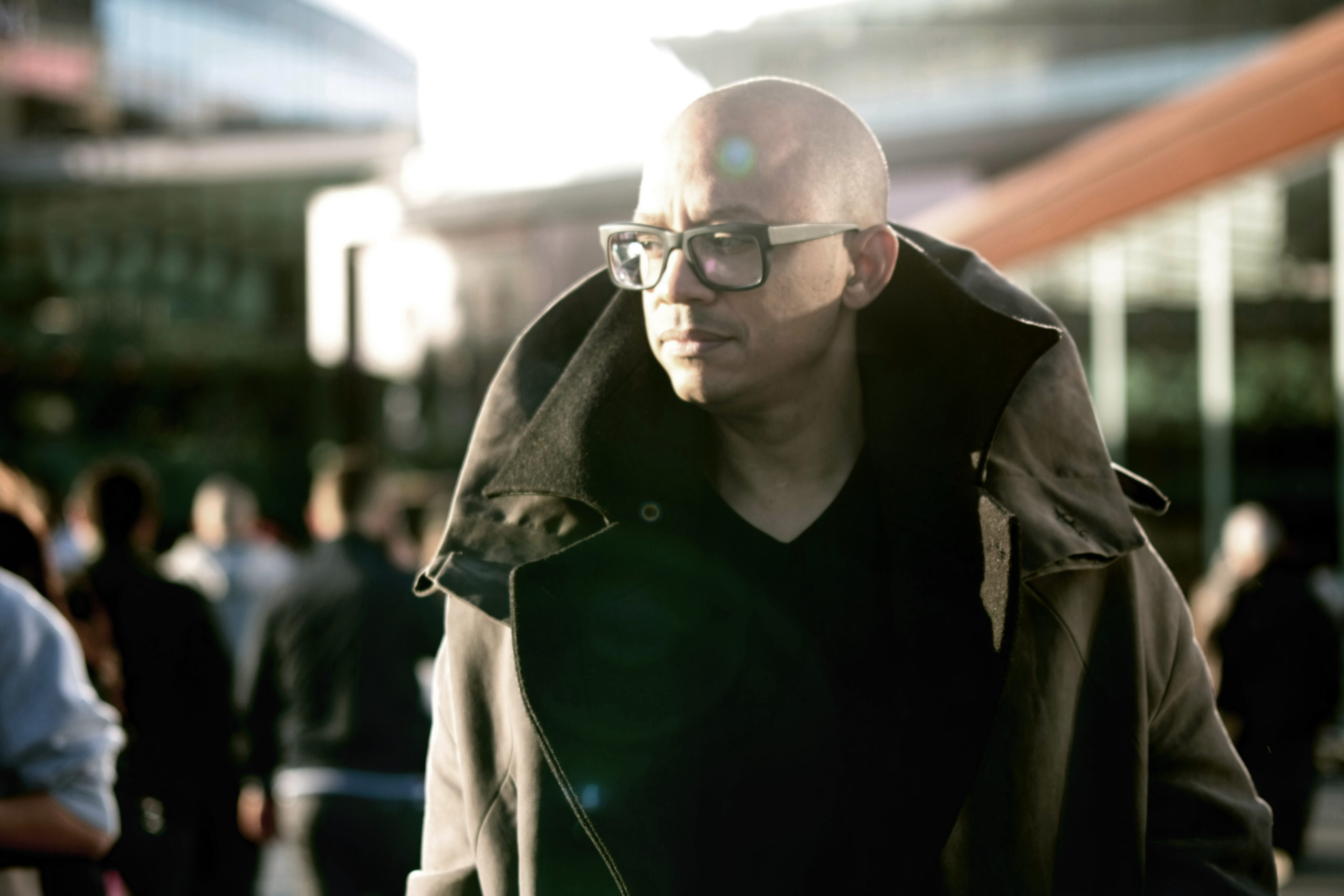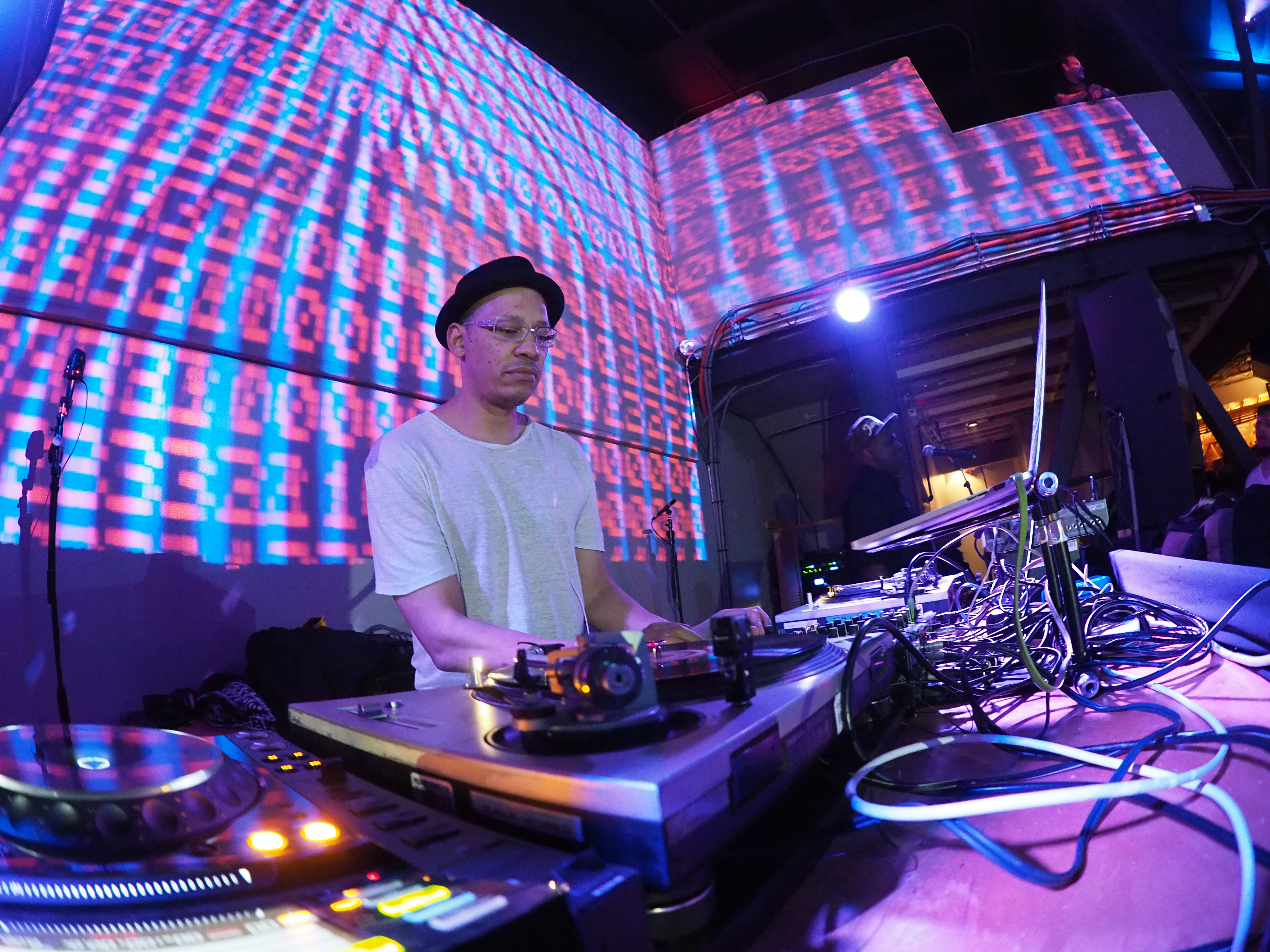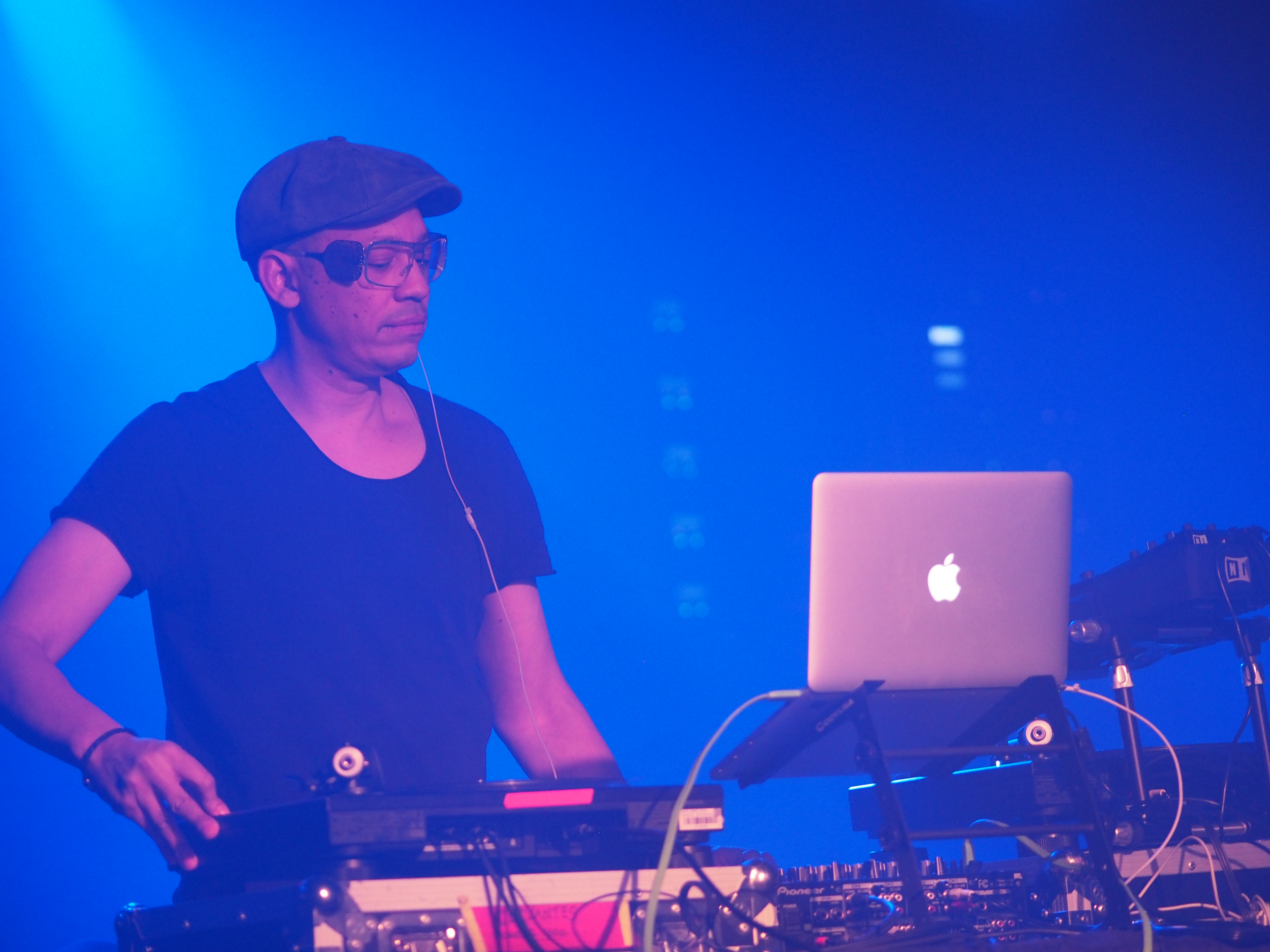Ask the Experts: LTJ Bukem
Danny Williamson answers your questions.

Ask the Experts: LTJ Bukem
Danny Williamson answers your questions.
LTJ Bukem, real name Danny Williamson, found his way into music through piano lessons as a child. He didn’t discover clubbing until the early ’80s, aged 17, by checking out the local soul venues. As a keen record buyer, he became interested in the idea of mixing his own version of a club soundtrack and DJing soon became his main focus. By 1988, he’d gained enough of a reputation to realise that DJing could maybe offer a full-on career; and no more than 24 months later, he’d performed in front of 10,000 people.
As a producer, Bukem has released an extraordinary number of legendary tracks, starting with “Logical Progression” (1991), “Demon’s Theme” (1992), “Atlantis,” “Music” (1993), and “Horizons” (1995). At once anthemic and relaxing, the former of these offered the blueprint to Bukem’s sonic vision, and inspired the birth of his own imprint, Goodlooking, which has since established itself as a leader in these sonic realms.
In 1998, Bukem released the Mystical Realms EP, featuring “Twilight Voyage” with sombre flute refrains, chopping keys, and an outer-world ambience. The vocal and instrumental versions of “Orchestral Jam,” with its urgent breaks and dissonant violins, along with the reflective last track “Journey Inwards,” represented a deeper development of the Bukem sound. In 2000, he released his long-awaited solo album, Journey Inwards, a diverse and multi-directional release of drum & bass, soul, downbeat, and house tracks.
During this time, Bukem has continued the Progression Sessions series of live mixes captured on CD, featuring performances recorded live in the USA, Tokyo, London, and Germany. He’s also compiled the Soulfood and Soul Addiction compilations, underlining his position as a sonic leader of post-rave breakbeat culture. In a constant pursuit to reinvent himself and his work, LTJ Bukem also continues to bring the sounds of soulful drum & bass to listeners through his impactful performances worldwide.
Having scanned through your questions, he’s selected those he wished to answer, and submitted them below.
Would it be possible to get some information about the production of the track “Remnants” with Tayla. Are the drums chopped from a break? What synths were used, etc? —James Boxley
Ah yes, “Remnants.” I guess there lies a story of the wonderful B-side and having to rustle one up to release a complete 12”. I think the track is about as basic as basic gets.
Russ (a.k.a Tayla), a dear friend to this day, came to me at the back end of ’92 with samples and an idea for “Bang The Drums.” We sat there, did it together, and were happy enough with the result to eventually release it in ’93. We then thought, as you do: Oh yea, we need another track for the flip to actually put it out.
The string intro was probably from a Korg M1, Roland D 50, or a similar synth from that time. The break is a famous one and used many times back in the day—Young Holt Unlimited’s track “Wah Wah Man,” if I recall. And then into the mix stepped Jon Pertwee for a vocal. He played one of the first doctors from Doctor Who in the ‘70s. Not sure whose idea that was—couldn’t have been mine! But hey, it gave us a title for the track. The breakdown string is also a famous sample within drum & bass, and used many times, lifted from one of the early sample CDs such as Zero G, X-Static Goldmine, Time and Space, etc. If I’m totally honest, I don’t look back on it with too much pride, but I appreciate you asking.
“Generally speaking, drum & bass moved from being complex story-telling compositions with numerous sections, key changes, and mood swings, to much shorter loop-based, drop-focused tracks, that are more technically advanced and instantaneously impactful.”
I’ve always loved the way you chop up the crossfader. The question is: were you a hip-hop scratch DJ before doing hardcore? —James Boxley
The chopping thing came from my love of all things “breaks.” I’ve never been a scratch DJ. I heavily got into it when house music became the thing. Around ’88-’89, certain hip-hop break tracks weaved their way into house music, such as Young MC’s “Know How” and Beat Club’s “Security.” During this time, I really got into buying break albums such as Renegade Break Loops and Bonesbreaks. This is where my chopping started—chopping bits and pieces of breaks over house tracks of the time. And this just stuck with me when drum & bass started. The early years of drum & bass saw many raw original breaks used so I had a lot of fun chopping them. Today’s tracks don’t use that many original breaks; tempo and production styles are very different. But I still manage to find bits and pieces to chop.
Do you remember back in the days, during Midem in Cannes, France, playing live in a nightclub called Le whisky à Gogo? It was in 2000 or 2001. That was not really packed that night, nobody was listening to drum & bass in the south of France at that time. Even today, I can say that it was one of the best nights I’ve had in a club; I was one of the few people dancing but I danced like crazy until I was so tired I had to come home to sleep.—Charles Dvorak
Yes, I do remember that night, and also playing at many other nights where drum & bass was first heard. Some packed, others not. These were exciting moments of introducing new ears to the music. Glad you had a good night. It’s amazing that nearly 30 years after its inception, drum & bass is the force it is today. Long may it live!
I released a drum & bass record in 1999 by Quadrant 4 called Uhuru, and we heard from someone that you played it, but I never had it confirmed. It wasn’t that easy to get a hold of people back then as it is now. It’s quite rare, only 150-200 copies were pressed, and we didn’t have them distributed in the UK as far as I know, so we obviously got really excited when we heard that you played it. I still have a few, so drop me a line if you’d like me to send you one. Peace! Discogs.
You got me there. Would love to hear! Message me a link of the four tracks to here and I’ll let you know if I ever played it or not.

I’m from Bristol where there’s been a surge of drum & bass and breaks events in recent years. Is there a location that you see as the epicentre of the genre?—Undisclosed
For me Bristol, and indeed the West Country, has always been at the forefront of drum & bass from way back right up to the present day, and it’s where I’ve spent many years playing. Some of our most treasured drum & bass artists began their journeys in Bristol and a lot have moved there since, so the city is an important place for this music, no doubt about it. London will always have that special place in my heart though, as this is where my drum & bass journey began.
I read somewhere that you’re a classically trained pianist. Why did you go into electronics? —Undisclosed
Yes, correct. From an early age I learned the piano but I didn’t take it all the way, and when I got into my mid-teens, I started going clubbing. It all changed for me then. Nightlife in the UK, especially London, was the place to be—a melting pot of so many music forms. I saw Alistair from Rapattack Sound System play at Acklam Hall in Ladbroke Grove 1984-85 and fell in love with Technics, the art of DJing, and I had a passion to share music with others. The sounds of that time were my music school for life and they still affect everything musically about me today.
Lots of your early work, like “Demon’s Theme,” seems to have prolonged intros and other musical features that a lot of other rave music at the time didn’t. I want to make melodic music that stands out, but do you think it runs the risk of not being suitable in the eyes of promoters at club venues and radio stations? —Undisclosed
The structure of drum & bass songs has changed a lot over the past three decades. Tracks back then could easily be 8-10 minutes long. When I made “Demon’s Theme,” it wasn’t unusual for a track to consist of two or three distinctive sections that individually could almost make separate tracks themselves. Many changes of direction and moods within a single piece of music, long intros, epic breakdowns. Even though tracks nowadays are half the length, even less, this doesn’t stop you from injecting melody into your song, or creating that moment that stands apart from other tracks. Main point, I think, is to make a piece of music that you yourself enjoy listening to. Why make something you hate to please others? This can often lead to a disaster. Look forward to checking out what you come up with.
“As an artist, you don’t undertake any monetary risks putting up a track. Reputational, possibly. But not monetary, really.”
I’m interested to know about your use of samples in your production. In “Logical Progression,” the Flowmasters sample works so nicely. How did your production process work—did you make a bass track and then think about suitable samples, or hear a song and think: “I can sample that,” and then make the track? — Will McCartney, London
When I first started to produce in 1990, like so many, I had no clue as to the legality of sampling someone else’s music composition. You had a record collection, you loved a piece of music from it, took a snippet, and off you went. Whether it was a must-have beat, new synth sound, catchy music, or a vocal sample—I guess this was often my starting point to creating something. Nowadays with so many choices of sounds and beats available from soft synths, including the thousands of official sample CDs on the market, sampling isn’t always necessary. With many great vocalists around today, getting that original voice on your track is a lot less hassle than sampling could turn out to be. If you think, however, using a sample in your track is worth it, then clearing it is the way to go. Thank me later.

When you first started producing, what gear did you use? I’d love to know your thoughts on the change in production equipment and programs from then compared to the modern day!
When I first started producing, I was using pure hardware, of course. I’m trying to remember everything I bought during the initial years, but below is a list of some of it. Writing the list is making me realise why I was always so broke!
Kurzweil K2500R
Juno
Korg Trinity
Korg M1
Korg Z1
Roland JD 800
Roland JV1080 & 2080
Roland D-50
Yamaha DX-7
Roland SC 880
Akai S950 & S1000
Emagic C-Lab Creator
Atari Computer
I also had a couple of Rhodes keyboards and a Solina, and some old ropey 32-channel mixing desk which, for the life of me, I can’t remember the name of, but it certainly worked. I had MIDI cables, patch bays, and audio cables everywhere. My studio was actually in the front room, much to everyone else’s disapproval in the house, so thanks for putting up with me in those times! Love you all! I used to love that race to buy the latest keyboard, when I could afford to. I’d get it home and go through the presets checking out the latest sounds.
It’s an obvious thing to say, but the computers were so much slower back then. They also made the music sound a certain way, and this made you work hard to get the required result, and gave a unique “out-of-time” swing to things, which was sometimes interesting.
Modern day making of music is so different. The main thing I love is how everyone can have a go with a studio in the box. It’s now affordable for most to have a little setup and give it a try. Load up your laptop and you’re off and running. These days with the amount of soft synths and sample CDs, you’ve almost got too many choices and can get lost in sound selection before you’ve even created anything. I guess it’s a good problem to have. I’m certainly having this problem myself as we speak, being back in the studio.
One thing has to be said though. Back in the day, after spending so much time creating a piece of music, and with the cost of making a record not being cheap, you kind of had to make sure your song was something you were completely sure on releasing. Nowadays I do think quality control has gone a bit south. As an artist, you don’t undertake any monetary risks putting up a track. Reputational, possibly. But not monetary, really. Saying that, I wouldn’t have it any other way.
I think that modern drum & bass and breaks are a lot quicker and drop-focused than older work. How do you think the scene has developed?
First and foremost, any development is better than stagnation. Two of the most significant shifts within drum & bass production that stand out for me are stylistic and structural. Assessing where the music has arrived stylistically is subjective and depends on one’s personal preference. But there’s no denying that there’s something for everyone these days; we have more variety than ever before.
Structurally, drum & bass tracks have indeed become a lot faster and much shorter over the last three decades. Tracks used to be around the 125bpm mark with an average length of eight minutes back in 1990, and now are made at around 172bpm upwards at just four minutes long—a big jump. The tempo increase has put limitation on using most original breaks sampled from old soul tracks—that would just sound too frantic at 180bpm—and I do miss those breaks in drum & bass because I love them so much. But at the same time, I do love how clinical producers have become with their modern beat designs. Generally speaking, drum & bass moved from being complex story-telling compositions with numerous sections, key changes, and mood swings, to much shorter loop-based, drop-focused tracks, that are more technically advanced and instantaneously impactful.
I guess this shift in music is indicative of our society in general, moving with the technological advances, seeking that instant emotional gratification: be it a takeaway over home cooking, a download over crate-digging, an emoji over a good old-fashioned phone call. At the end of the day, there’s no right and wrong; all of this works perfectly fine if it makes you feel good.
LTJ Bukem will play at Hospitality in the Park on September 21, with information here.

